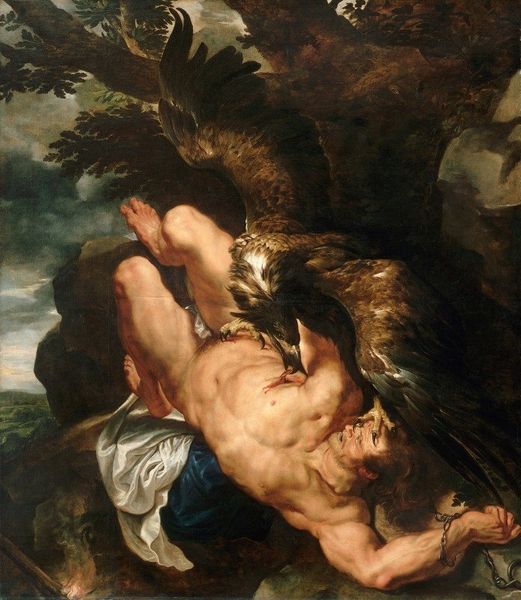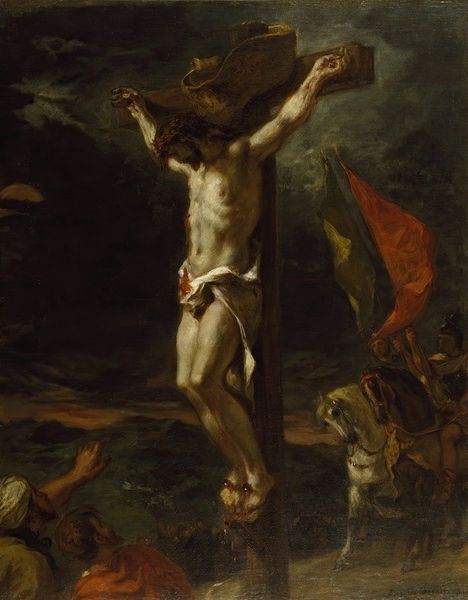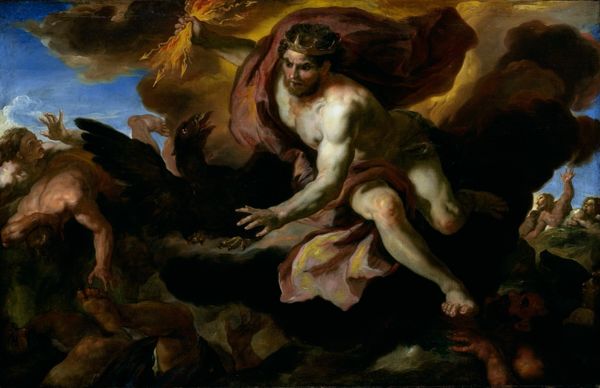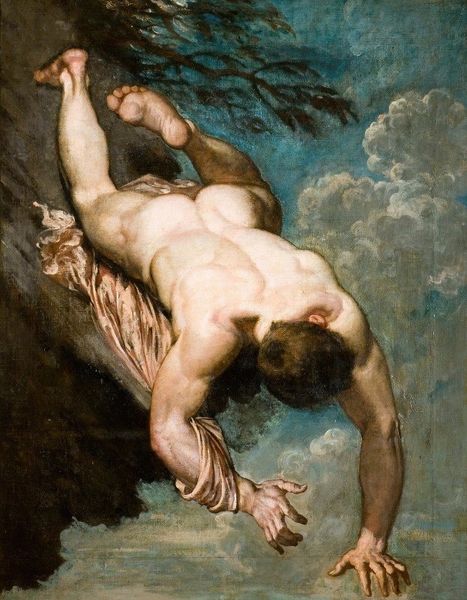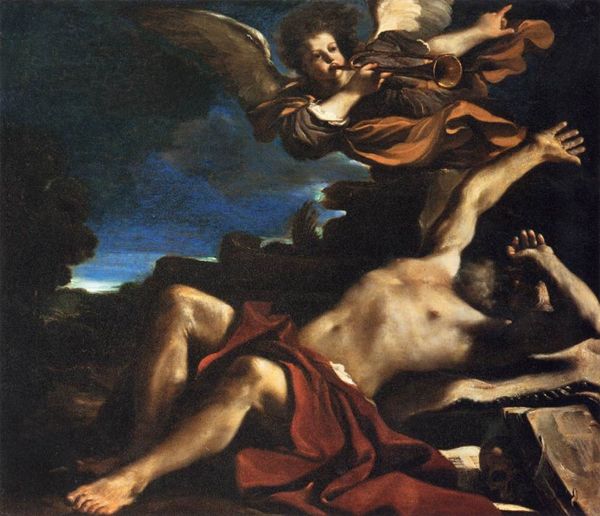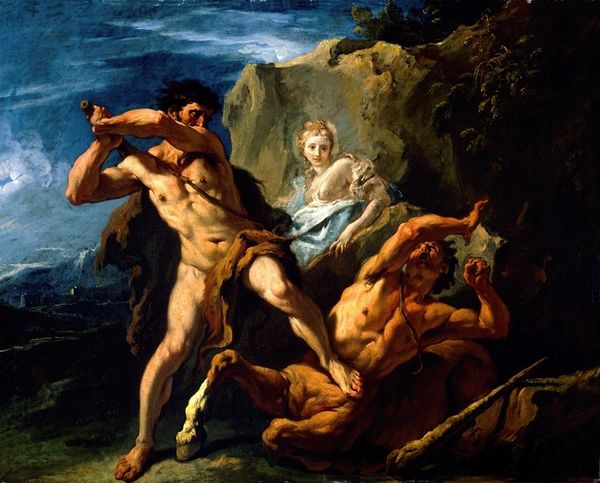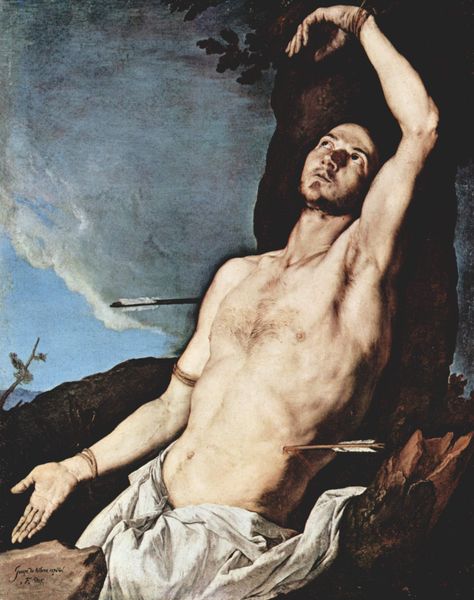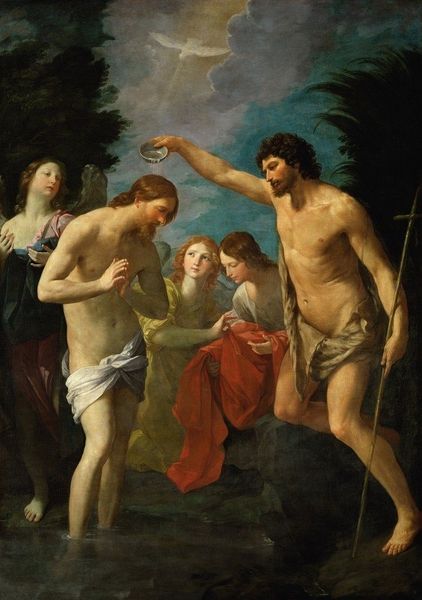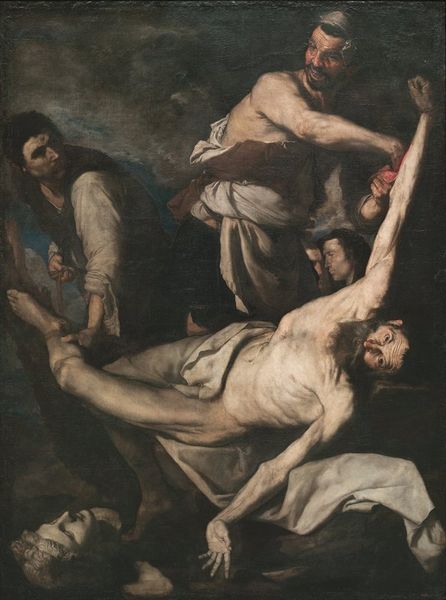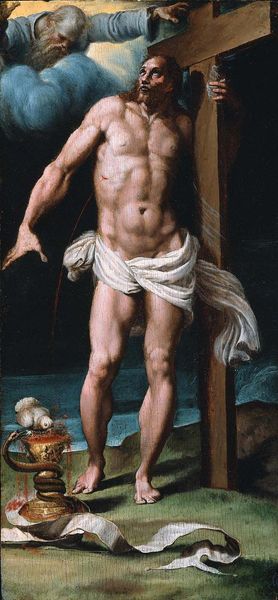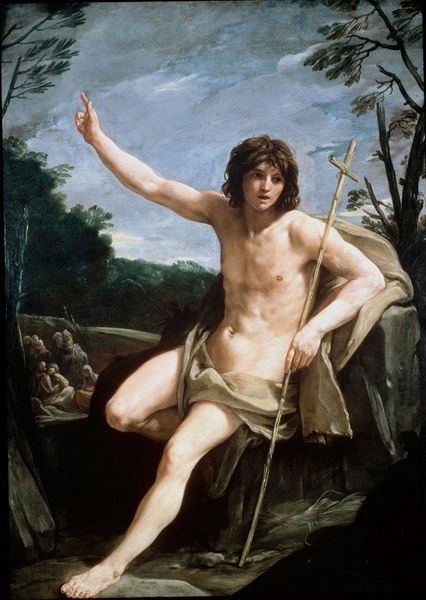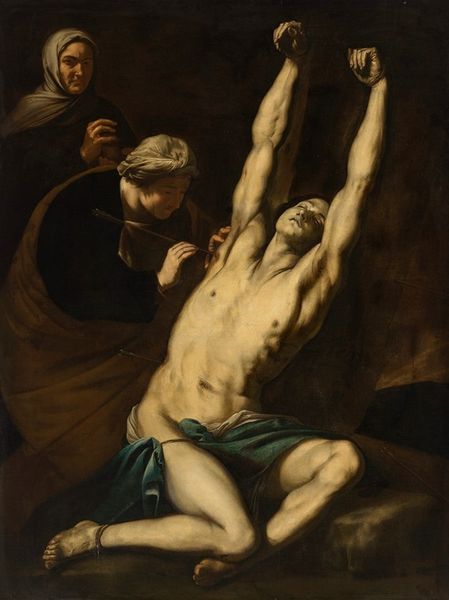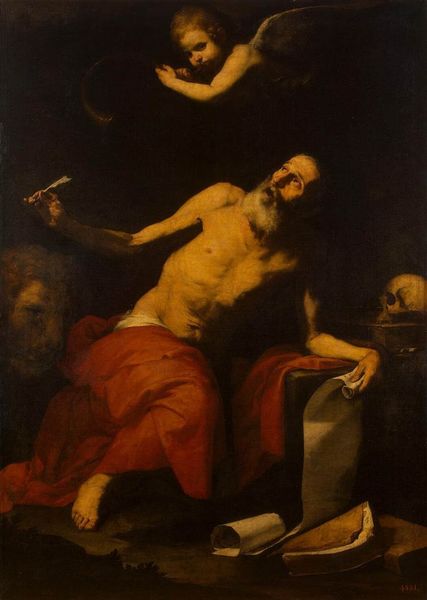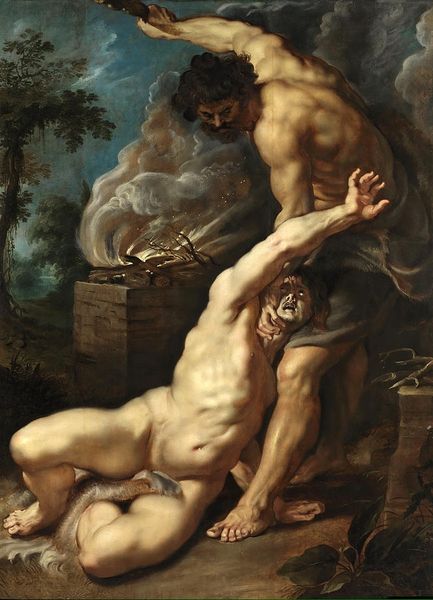
oil-paint
#
portrait
#
baroque
#
oil-paint
#
spanish
#
figuration
#
oil painting
#
history-painting
#
nude
Copyright: Public Domain: Artvee
Jusepe de Ribera made this painting of Saint Sebastian in the seventeenth century. Saint Sebastian was a popular subject at this time, but it's the unidealized, almost brutal depiction of his suffering that makes Ribera’s painting so remarkable. Made in Naples, then under Spanish rule, Ribera’s art reflects both a fascination with classical antiquity and the stark realities of life. The artist presents Sebastian as a muscular, yet vulnerable figure, tied to a tree and pierced by arrows. The dramatic chiaroscuro, with its strong contrasts of light and shadow, heightens the emotional intensity. How might this depiction challenge the norms of religious art? Rather than a divine figure, Sebastian is rendered as human, his pain palpable. What does it say about the social conditions of its time? To fully appreciate its historical meaning, we can consult archival sources, religious texts, and critical analyses, piecing together a richer understanding of the power of art to reflect—and challenge—the society that produced it.
Comments
No comments
Be the first to comment and join the conversation on the ultimate creative platform.
